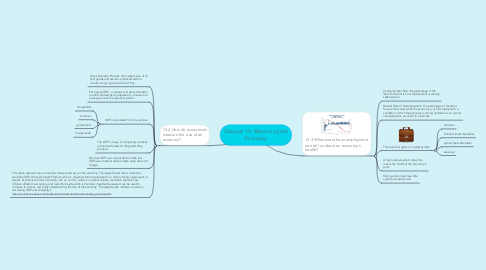Chapter 13: Measuring the Economy
by Annah Scherling


1. 13.2 How do economists measure the size of an economy?
1.1. Gross Domestic Product- the market value of all final goods and services produced within a country during a given period of time
1.2. Per Capita GDP - a nation’s real gross domestic product divided by its population; a measure of average economic output per person
1.3. GDP is calculated from four sectors
1.3.1. households
1.3.2. business
1.3.3. government
1.3.4. foreign trade
1.4. The GDP is a way of comparing countries economies based on the goods they produce.
1.5. Nominal GDP uses current dollars while real GDP uses constant dollars where value does not change.
1.6. This article explains how economists measure the size on the economy. The largest factor that is looked at would be GDP, Gross Domestic Product, which is all goods that are produced in a nation during a given year or period. Economis will look at factors such as: nomial, which is in current dollars, real which explains how inflation effects the economy, and lastly Per Capita which is the most important because it can be used to compare to nations and truely understanding the size of the economy. The website also includes a video on calculating GDP and analyzing it. http://economics.about.com/od/economicindicatorintro/a/measure_economy.htm
2. 13.3 What does the unemployment rate tell us about an economy's health?
2.1. Unemployment Rate: the percentage of the labor force that is not employed but is actively seeking work.
2.2. Natural Rate of Unemployment - the percentage of the labor force without work when the economy is at full employment; a condition in which the economy is strong and there is no cyclical unemployment, around 4 to 6 percent.
2.3. There are four types of unemployment
2.3.1. structural
2.3.2. frictional (most desirable)
2.3.3. cyclival (least desirable)
2.3.4. seasonal

